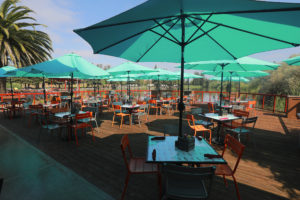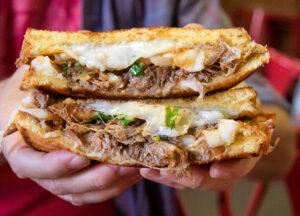
Producing a braise in your own kitchen is a bit like making porn in your own bed: It rewards practice, because when you get it just right, it’s the best you’ll ever see, and all the times you don’t, it’s still a very long way from sucking. Similarly, there is just so much to love about the braise: Purely from a gastronomic perspective, no other cooking technique so easily employed by the home cook comes close to creating the depth and concentration of flavor than does the properly executed braise. It rewards economy: The intelligent use of cheaper cuts, transformed as if by magic; the stuff otherwise too tough to chew transmogrified into fork-tender nuggets of gustatory gold by the application of little more than water, heat, and patience. It produces exceptional sauces and gravies almost as afterthoughts. The braise accommodates proteins, starches, and vegetables all in one pot, which can then be served family style in the cooking vessel itself, or re-plated and dressed up in style, depending. And, provided one follows some basic principles, an effective braise provides the cook with an exceptional amount of interpretive girth, requires no careful measurements, no indentured servitude to recipes and cookbooks, all of which amounts to solid structural engineering for the way I like to cook.
As to the title of this thread, just for the record, I’ve neither read the book, seen the movie, nor, for that matter, given any serious consideration to doing either, as I’m reasonably certain that I’d be repulsed but, like the ubiquitous fender-bender on the 101, find it impossible to look away; I strongly suspect that the experience would be very much like being force-fed Indian desserts while attending one of those made-for-TV mega-church Sunday sermons: Cloyingly sweet and offensively preachy all at the same time, a sort of psychological gavage. (Maybe that’s grossly unfair but, as with meals, I can only consume so many books, and I aim to make them all count.) Truth be told, I’m just trying to cross-stitch the title onto the longer thread, because braising, unlike snippy reviews of books I’ve not read or Julia Roberts’ teeth, will be a recurring theme in my kitchen and on this site, because a good braise is the sort of food that you smell all day long, that makes you want to open your best bottle of red wine and eat in your PJs at the same time, that can make a girl’s toes curl. For better or worse, and likely both, my wife doesn’t really eat land animals, so my best shot at getting a toe-curling endorsement, inasmuch as cooking is concerned, is probably mac-n-cheese (the subject of another ongoing thread), but today I’ve got braising on the brain and, more specifically, the braising of big hunks of prehistoric-looking meat, wrapped in butcher’s paper, studded with large bones, and replete with the potential to disturb small children.

So what is braising? Larousse describes a braise as “a moist cooking method using a little liquid that barely simmers…” and goes on to point out that the classical technique involves first browning the meat in a little hot fat and then arranging it on a bed of cooked vegetables, partially covered in cooking liquid, and allowed to simmer slowly in a tightly covered pan so as not to lose moisture its (and, therefore, flavor and texture) due to excessive evaporation. That pretty much sums it up, although there are some other basic guidelines – use a cut with some connective tissue in order to create body in the sauce; be sure to have some acid in the liquid to break it all down and balance out the richness; generally, add some aromatics to the broth; finish the sauce at the end, while the meat rests; and always, try to have a general sense of how all the flavors will ultimately work together, and in proportions suited to the pot – which, when followed – invariably improve the final result. I recently noticed that McGee, in his essential On Food and Cooking, further advises that the meat be kept in relatively large pieces; that the initial browning kills microbes in addition to creating flavor; and – in a departure from almost every other cookbook I’ve read – recommends starting the pot in a cold oven and restricting the final cooking temperature to around 200F, which is considerably cooler than most recipes you’ll find. I have, in the past, used a pre-heated oven at a temperature of anywhere from 250-375F, depending on the particulars of the cut the dish is based upon. However, I make a general rule of listening to McGee -the guy is a scientist and does not mess around – so I’m going to do another one soon using his particular technique.
I’m not going to provide recipes in this post – I’ve got lots of favorites, some mine, some not, and I’ll put a bunch of them up over time – because I’m already over my daily word-count, and all I really hoped for was to inspire anyone who hasn’t braised to do so forthwith, and as to everybody else, to do it better, and more often.
(Click anywhere on the Foodista widget below for a step-by-step of the basic technique)

Meat, Braise, Love
Producing a braise in your own kitchen is a bit like making porn in your own bed: It rewards practice, because when you get it just right, it's the best you'll ever see, and all the times you don't, it's still a very long way from sucking. Similarly, there is just so much to love about the braise: Purely from a gastronomic perspective, no other cooking technique so easily employed by the home cook comes close to creating the depth and concentration of flavor than does the properly executed braise.











